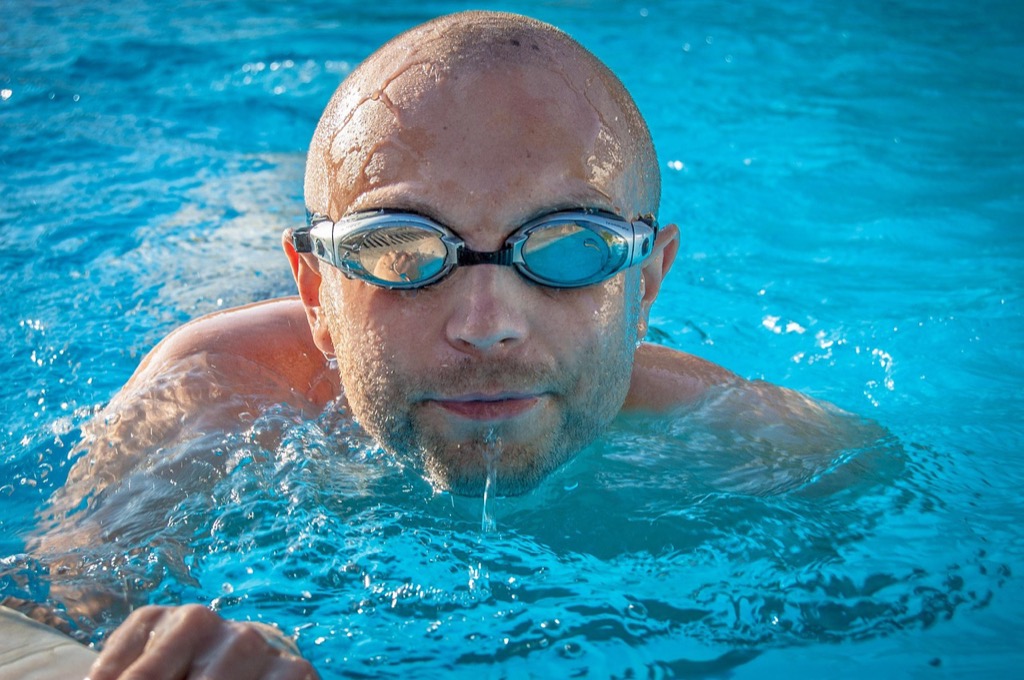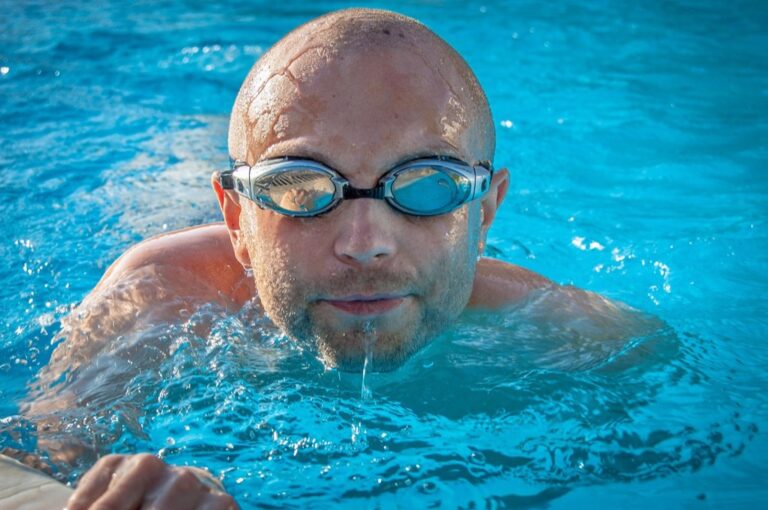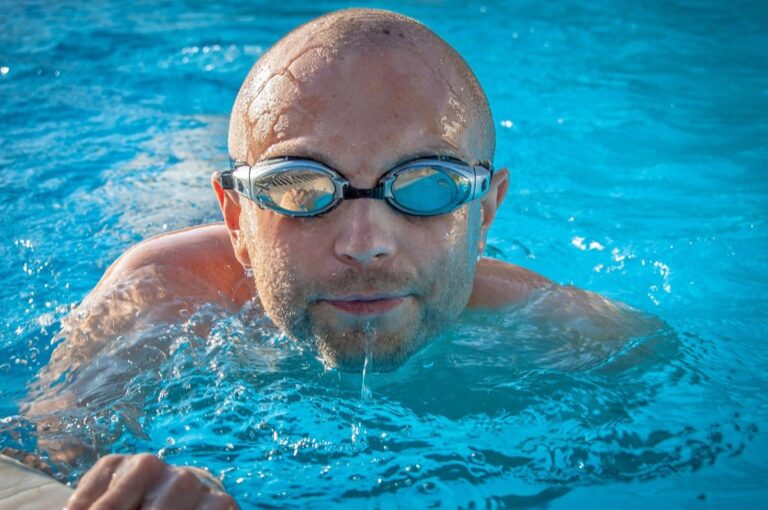7 Best Heated Pool Options for Winter That Maximize Performance
Discover 7 top heated pool options for winter swimming! From energy-efficient heat pumps to solar systems, find the perfect heating solution for your pool size and budget.
Why it matters: Winter doesn’t have to mean saying goodbye to your pool – with the right heating system you can enjoy year-round swimming while potentially increasing your home’s value.
The big picture: Modern pool heating technology offers everything from energy-efficient heat pumps to solar-powered systems that can extend your swim season by months or even make it a year-round activity.
What’s ahead: We’ve tested and researched the top heating options to help you find the perfect system for your pool size budget and climate needs.
Disclosure: As an Amazon Associate, this site earns from qualifying purchases. Thank you!
Solar Pool Heating Systems
Heat your pool for free with the SunHeater Solar Pool Heating System! This kit includes two durable 2' x 20' polypropylene panels that raise water temperature up to 10°F, extending your swim season.
Solar pool heating systems harness the sun’s energy to warm your pool water through roof-mounted collectors. They’re the most environmentally responsible heating option and can deliver impressive long-term savings despite higher upfront costs.
Cost-Effective Long-Term Solution
Solar systems typically pay for themselves within 3-7 years through eliminated energy bills. You’ll save $300-800 annually on heating costs compared to gas or electric systems. The collectors last 15-25 years with minimal maintenance, making them the cheapest heating option over time.
Eco-Friendly Energy Source
Solar heating produces zero emissions and relies entirely on renewable energy. You’ll eliminate 2-4 tons of CO2 emissions annually compared to gas heating systems. This sustainable approach reduces your carbon footprint while maintaining comfortable swimming temperatures throughout extended seasons.
Installation and Maintenance Requirements
Installation requires adequate south-facing roof space and professional mounting of collectors and plumbing connections. You’ll need annual inspections and occasional cleaning of debris from collectors. Most systems include automatic controls and freeze protection, requiring minimal ongoing maintenance compared to mechanical heating systems.
Heat Pump Pool Heaters
Stay comfortable year-round with the BLACK+DECKER Smart Portable Air Conditioner. This 14,000 BTU AC and 10,000 BTU heater cools or heats rooms up to 700 sq. ft. and features convenient app and voice control.
Heat pump pool heaters extract warmth from the surrounding air and transfer it to your pool water, delivering exceptional efficiency that can slash your heating costs by up to 80% compared to traditional gas heaters.
Energy Efficiency Benefits
Heat pumps achieve coefficient of performance (COP) ratings between 4-7, meaning they produce 4-7 times more heat energy than the electricity they consume. You’ll typically see energy savings of $400-1,200 annually compared to gas heating, with the highest efficiency models delivering consistent performance while maintaining lower operating temperatures that extend equipment lifespan.
Performance in Various Climates
Heat pumps work best when ambient temperatures stay above 50°F, making them ideal for warmer climates like Florida, Texas, and Southern California. Performance drops significantly below 45°F, requiring backup heating systems in northern regions. You’ll get year-round reliability in USDA zones 8-11, while zones 6-7 need supplemental heating during winter months.
Operating Cost Considerations
Expect to pay $200-600 monthly in electricity costs during peak heating season, depending on your local utility rates and pool size. Initial investment ranges from $3,000-6,000 installed, but heat pumps typically pay for themselves within 2-4 years through energy savings. Factor in 10-15 year lifespans and minimal maintenance requirements when calculating long-term value.
Gas Pool Heaters
Gas heaters remain the powerhouse choice for pool owners who demand quick results and reliable performance regardless of weather conditions.
Rapid Heating Capabilities
Gas heaters deliver unmatched speed when you need immediate pool warming. You’ll see temperature increases of 1-3°F per hour depending on your pool size and heater BTU rating. This rapid heating makes gas systems perfect for occasional use or last-minute pool parties when waiting isn’t an option.
Natural Gas vs. Propane Options
Natural gas heaters cost less to operate at $3-5 per hour but require existing gas lines for installation. Propane units offer installation flexibility anywhere on your property but run $5-9 per hour in fuel costs. You’ll find propane ideal for remote locations while natural gas works best for homes with existing utility connections.
Best Use Cases for Gas Heating
Gas heating excels for spa heating, occasional pool use, and northern climates where heat pumps struggle. You’ll appreciate gas heaters most when hosting events, opening pools early in spring, or maintaining precise temperatures for therapeutic swimming. Commercial pools and rental properties often choose gas for its consistent performance and quick recovery times.
Electric Resistance Pool Heaters
Heat your above-ground pool (up to 5,400 gallons) efficiently with this 16,000 BTU electric heat pump. Control and monitor the unit remotely via WiFi using the Smart Life app.
Electric resistance heaters offer the most predictable heating option when other systems fall short. They’re particularly valuable for pools where gas lines aren’t available and heat pumps can’t perform reliably.
Reliable Indoor Pool Solution
Electric resistance heaters excel in enclosed pool environments where consistent temperatures matter most. You’ll find them powering indoor pools, spas, and natatoriums where ambient air temperature doesn’t fluctuate wildly. They deliver steady 1-2°F increases per hour regardless of outside weather conditions, making them ideal for commercial facilities requiring dependable year-round operation.
Installation Simplicity
Installation requires only electrical connections and basic plumbing hookups without gas lines or complex refrigeration components. Most units mount directly to your existing pool equipment pad and connect through standard electrical panels. You’ll need a qualified electrician for the 220V connections, but the process typically takes 2-4 hours compared to full-day installations for other heating systems.
Operational Expense Factors
Operating costs run 2-3 times higher than heat pumps and gas heaters due to direct electrical resistance heating. You’ll pay $800-2,000 annually for typical residential pools depending on your local electricity rates and usage patterns. However, minimal maintenance requirements and 15-20 year lifespans help offset the higher energy costs, particularly in areas with expensive natural gas or propane pricing.
Pool Heat Exchangers
Heat your pool or spa efficiently with this durable, corrosion-resistant stainless steel heat exchanger. Featuring a 200K BTU/hr capacity and a spiral winding design for consistent temperature, it's ideal for various heating systems.
Pool heat exchangers tap into your home’s existing heating system to warm pool water efficiently. They’re particularly effective when you already have a boiler or high-efficiency furnace running your home’s heating.
Compatible with Existing Home Systems
Heat exchangers connect directly to your home’s boiler or furnace system through dedicated piping loops. You’ll need adequate BTU capacity in your existing system – typically requiring 100,000-400,000 BTUs depending on pool size. Most residential boilers can handle the additional load without upgrades.
Dual-Purpose Heating Benefits
You’ll maximize your heating system’s efficiency by running both home and pool heating simultaneously during winter months. This approach reduces overall energy waste compared to separate heating systems. Your existing boiler operates at peak efficiency when handling multiple heating zones.
Professional Installation Requirements
Installation requires certified plumbers and heating technicians to connect pool loops to your home’s heating system safely. You’ll need proper heat exchanger sizing calculations based on pool volume and desired temperature rise. Most installations take 1-2 days including system integration and pressure testing.
Wood-Fired Pool Heaters
Wood-fired pool heaters offer a rustic, cost-effective solution that transforms logs into comfortable swimming temperatures. You’ll find these systems particularly appealing if you want complete independence from utility costs and grid connections.
Off-Grid Heating Solution
Wood-fired heaters eliminate monthly energy bills by burning readily available firewood, making them perfect for remote properties without gas lines or reliable electricity. You can heat your pool using locally sourced wood, fallen trees, or construction scraps at a fraction of traditional heating costs. These systems work independently of power grids, ensuring consistent pool heating even during outages or in rural locations where utility connections aren’t feasible.
DIY Installation Possibilities
Basic wood-fired pool heaters can be installed by experienced DIYers with welding skills and plumbing knowledge, typically requiring 8-12 hours of work. You’ll need to construct a firebox, install heat exchanger coils, and connect water circulation lines to your existing pool pump system. Most installations involve creating a simple concrete pad, running insulated piping, and ensuring proper chimney ventilation for safe operation and local code compliance.
Environmental Impact Considerations
Wood-fired heating produces carbon emissions but remains carbon-neutral when you use sustainably harvested local wood sources. You’ll generate ash waste requiring proper disposal and need to manage smoke production to avoid neighborhood conflicts or air quality concerns. These systems work best with seasoned hardwoods that burn cleanly, reducing particulate emissions while maximizing heat output and minimizing environmental impact on surrounding areas.
Geothermal Pool Heating Systems
Geothermal systems tap into the earth’s constant underground temperature to heat your pool water efficiently. They’re the most sustainable long-term heating solution available today.
Maximum Energy Efficiency
Geothermal systems achieve coefficient of performance ratings of 3-6, delivering 300-600% efficiency compared to traditional heaters. You’ll experience the lowest operating costs of any heating method, with annual savings reaching $1,000-2,500 depending on your pool size and local energy rates.
Long-Term Investment Benefits
Initial installation costs range from $15,000-25,000, but geothermal systems typically pay for themselves within 5-8 years through energy savings. You’ll enjoy 20-25 years of reliable operation with minimal maintenance requirements, making them the most cost-effective heating solution over their lifespan.
Site-Specific Requirements
Your property needs adequate space for horizontal loops (1/2 acre minimum) or suitable geology for vertical drilling. Professional soil analysis determines feasibility, as clay and rocky conditions can increase installation costs significantly. Local building codes often require permits and inspections for ground loop installation.
Conclusion
Choosing the right pool heating system depends on your specific needs budget and climate. You’ll find that solar and geothermal systems offer the best long-term value despite higher upfront costs while gas heaters excel for quick heating when you need it most.
Consider your local weather patterns and energy costs when making your decision. Heat pumps work brilliantly in warmer climates but you might need electric resistance heaters or heat exchangers in colder regions where other systems struggle.
Remember that investing in pool heating isn’t just about comfort—it’s about maximizing your pool investment year-round. The right system will pay for itself through extended swim seasons reduced energy bills and increased home value making winter swimming an affordable luxury you can enjoy for years to come.
Frequently Asked Questions
What are the main types of pool heating systems available?
The main pool heating systems include solar pool heaters, heat pumps, gas heaters (natural gas and propane), electric resistance heaters, heat exchangers, wood-fired heaters, and geothermal systems. Each type offers different benefits in terms of cost, efficiency, and environmental impact, with solar and heat pumps being the most energy-efficient options.
How much can I save with a solar pool heating system?
Solar pool heating systems typically save homeowners $300-800 annually on heating costs compared to gas or electric systems. These systems usually pay for themselves within 3-7 years and produce zero emissions, making them both cost-effective and environmentally friendly for long-term pool heating.
Are heat pump pool heaters worth the investment?
Yes, heat pump pool heaters can reduce heating costs by up to 80% compared to traditional gas heaters, saving $400-1,200 annually. With an initial investment of $3,000-6,000, they typically pay for themselves within 2-4 years and last 10-15 years with minimal maintenance requirements.
How quickly can gas pool heaters warm up my pool?
Gas pool heaters provide rapid heating, delivering temperature increases of 1-3°F per hour depending on pool size and BTU rating. This makes them ideal for occasional use, last-minute pool parties, and situations where you need quick heating results.
What are the operating costs of electric resistance pool heaters?
Electric resistance pool heaters have higher operational costs, running 2-3 times more than heat pumps and gas heaters. Annual expenses typically range from $800-2,000, though they offer reliable performance and a long lifespan of 15-20 years with minimal maintenance.
Do geothermal pool heating systems really save money?
Geothermal systems offer exceptional efficiency with 300-600% performance ratings, resulting in annual savings of $1,000-2,500. Despite high initial costs of $15,000-25,000, they typically pay for themselves within 5-8 years and provide 20-25 years of reliable operation.
Which pool heating system works best in cold climates?
Heat pumps work best in USDA zones 8-11 but may need supplemental heating in colder regions. Gas heaters and electric resistance heaters perform consistently regardless of climate, making them better choices for northern climates where heat pumps struggle.
Can I install a wood-fired pool heater myself?
Wood-fired pool heaters can be installed by experienced DIYers, making them a cost-effective option for remote properties. They provide independence from utility costs and grid connections while using readily available firewood as fuel.









